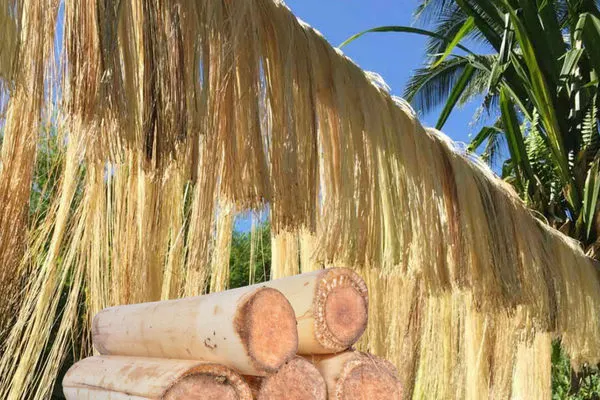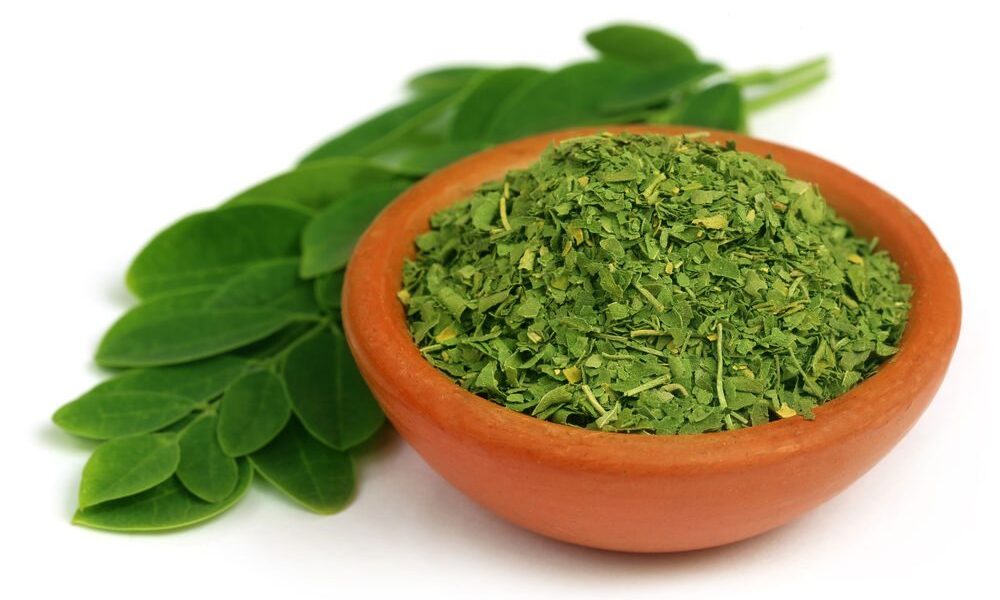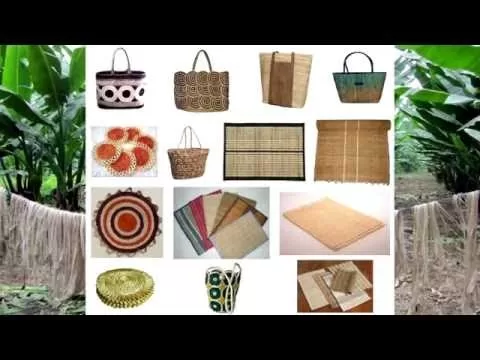Contents
- 1 How two innovative crops are transforming the lives and Fostering Sustainable Jobs and Economic Growth in Rural Landscapes
- 2 Prof. Aécio D’Silva, Ph.D AquaUniversity
- 3 Cultivating Prosperity – What is moringa and why is it important?
- 4 What is banana tree fiber and why is it important?
- 5
- 6 Cultivating Prosperity – Growing Green Opportunities
- 7 Fostering Job Opportunities
- 8
- 9 Enhancing Prosperity
How two innovative crops are transforming the lives and Fostering Sustainable Jobs and Economic Growth in Rural Landscapes
Prof. Aécio D’Silva, Ph.D
AquaUniversity
Cultivating Prosperity – Unlocking the potential of moringa leaves and seeds oil as well as banana trees not only nurtures the environment but also becomes a catalyst for rural micro-entrepreneurship. Join us on a journey where sustainable planting and processing initiatives bring forth jobs, prosperity, and fabric production.

Rural communities worldwide face the dual challenge of environmental sustainability and economic stability. such as poverty, malnutrition, environmental degradation, and lack of access to markets and services. To overcome these challenges, some farmers are turning to two unconventional crops: moringa and banana tree fiber. These crops have the potential to improve food security, health, income, and sustainability for millions of people.

These innovative initiatives centered around moringa, and banana tree fiber are emerging as powerful tools to address these issues concurrently. By promoting the cultivation and processing of these agricultural resources, we can create a cycle of prosperity that benefits both the environment and local economies.
Moringa and banana tree fiber are not only nutritious and eco-friendly but also profitable for rural entrepreneurs who use them to create value-added products.
Cultivating Prosperity – What is moringa and why is it important?
Moringa is a fast-growing tree that can thrive in dry and marginal lands. It has been called a “miracle tree” because of its multiple benefits. Moringa leaves are rich in protein, vitamins, minerals, and antioxidants, and can be eaten fresh or dried as a powder. Moringa seeds can be pressed to produce edible oil or used to purify water. Moringa flowers and pods are also edible and nutritious.
Moringa is not only a source of food, but also a source of income. Farmers can sell moringa products to local or international markets or use them to start their own businesses. For example, some farmers in Kenya have formed cooperatives to produce and market moringa powder, oil, and soap. Others have partnered with social enterprises to supply moringa to health and beauty companies.
What is banana tree fiber and why is it important?
Banana tree fiber is the fibrous material that remains after the banana fruit is harvested. It is usually considered a waste product and discarded, but it can also be used to make various products such as paper, textiles, handicrafts, and bioplastics. Banana tree fiber is biodegradable, renewable, and versatile, and can offer a sustainable alternative to synthetic materials.
Banana tree fiber is also a source of income for rural entrepreneurs who use it to create value-added products. For example, some women in Uganda have formed groups to make and sell banana fiber paper and crafts. Others have collaborated with NGOs and companies to produce banana-fiber sanitary pads and diapers. These products not only generate income, but also address social and environmental issues such as menstrual hygiene, waste management, and deforestation.
Cultivating Prosperity – Growing Green Opportunities
Planting Moringa and Banana Trees: The first step towards rural economic empowerment involves planting moringa and training farmers to defibrillate the already existent banana trees after fruit harvest. Moringa, known as the “miracle tree,” offers a plethora of nutritional benefits while thriving in diverse climates. Simultaneously, banana trees, often overlooked for more than their fruit, provide strong and versatile fibers ideal for sustainable fabric production.
Processing for Fabric: Once the trees mature, the focus shifts to processing. Moringa leaves can be transformed into a nutrient-rich powder, while banana tree fibers can be extracted and spun into eco-friendly fabric. These processing avenues create a spectrum of opportunities for micro-entrepreneurs, from running small-scale processing units to producing fabric for local and global markets.
Fostering Job Opportunities
Entrepreneurial Hubs in Rural Areas: To encourage job creation, establishing entrepreneurial hubs in rural areas is essential. These hubs become focal points for processing units, providing training, resources, and a marketplace for locally produced moringa and banana tree fiber products. By decentralizing production, we stimulate local economies and empower individuals to become self-reliant entrepreneurs.
Micro-Enterprises and Job Diversity: The micro-enterprises stemming from these initiatives go beyond fabric production. Entrepreneurs can explore diverse avenues such as creating moringa-based health products, banana fiber handicrafts, and more. This approach not only generates income but also instills a sense of pride and ownership within the community.
Enhancing Prosperity
Sustainable Economic Growth: The sustainable cultivation and processing of moringa and banana trees pave the way for holistic economic growth. As these ventures expand, they contribute to the overall development of rural regions, fostering a sense of community resilience and prosperity.
Promoting the planting and processing of moringa and banana trees for fabric production is a multifaceted approach. It not only brings about a positive environmental impact but also establishes thriving micro-entrepreneurial ecosystems in rural areas. The fusion of sustainable practices and economic growth ensures a more prosperous future for all.
These initiatives create opportunities for traditionally marginalized groups, particularly women. By involving them in various stages of planting, processing, and entrepreneurship, we promote sustainable and lasting economic activities.
Concluding, Moringa and banana tree fiber are examples of how innovative crops can transform the lives of rural communities. First, they provide food security and nutrition for farmers and their families, especially in times of drought or crop failure. Second, they create employment and income opportunities for farmers and entrepreneurs, especially women and youth, who can use their skills and creativity to produce and market various products. Third, they promote environmental sustainability and resilience, as they can grow in harsh conditions, reduce soil erosion, and replace harmful materials. Fourth, they foster social inclusion and empowerment, as they enable farmers and entrepreneurs to access markets and services, form networks and cooperatives, and participate in decision-making.
By cultivating and utilizing these crops, farmers and entrepreneurs can improve their livelihoods, health, and well-being, while also contributing to the global goals of ending hunger, poverty, and environmental degradation. Moringa and banana tree fiber are not only crops but also catalysts for change and prosperity.
It’s time for elected officials, rural communities, associations, and family farmers to join efforts together to foster development programs to Cultivating Prosperity by Empowering Rural Communities through Moringa and Banana Tree Fiber Entrepreneurship.
References
[1] Moringa: The Miracle Tree. (n.d.). Retrieved from https://www.moringatrees.org/
[2] Muthoni, J., & Onguso, J. (2018). Moringa oleifera: A review of the medicinal potential and its cultivation in Kenya. African Journal of Horticultural Science, 12, 1-18.
[3] Banana fibre: A boon for rural women. (2019, July 29). Retrieved from https://www.fao.org/fao-stories/article/en/c/1203745/
[4] Nair, S., & Jayasree, A. K. (2014). Extraction and characterization of banana pseudo stem fibers. International Journal of Engineering Research and Technology, 3(8), 1080-1084.
[5] Muthuri, C. W., Ong, C. K., Craigon, J., Mati, B. M., Ngumi, V. W., & Black, C. R. (2005). Tree and crop productivity in Grevillea, Alnus and Paulownia-based agroforestry systems in semi-arid Kenya. Forest Ecology and Management, 212(1-3), 23-39.
[6] Kumar, K. S., & Bhowmik, D. (2012). Banana fibre-reinforced biodegradable soy protein composites. Journal of Reinforced Plastics and Composites, 31(4), 241-252.





